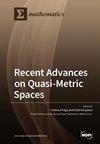Causal Modeling of Academic Activity and Study Process Management
IF 2.2
3区 数学
Q1 MATHEMATICS
引用次数: 0
Abstract
This article presents a causal modeling approach for analyzing the processes of an academic institution. Academic processes consist of activities that are considered self-managed systems and are defined as management transactions (MTs). The purpose of this article is to present a method of causal modeling of organizational processes, which helps to determine the internal model of the current process under consideration, its activities, and the processes’ causal dependencies in the management hierarchy of the institution, as well as horizontal and vertical coordination interactions and their content. Internal models of the identified activities were created, corresponding to the MT framework. In the second step, based on the causal model, a taxonomy of characteristics is presented, which helps to systematize the process quality assessment and ensures the completeness of the characteristics and indicators. Predefined structures of characteristic types are the basis of activity content description templates. Based on the proposed method, two causal models are created: the “to-be” causal model of the target study process (based on expert knowledge) and the “as-is” documented (existing) model of the study process used to evaluate the study process’s quality. The principles and examples of comparing the created “to-be” causal model with the existing study process monitoring method are presented, enabling the detection of the shortcomings in the existing method for assessing academic performance. Causal modeling allows for the rethinking of existing interactions and the identification of necessary interactions to improve the quality of studies. The comparison based on causal modeling allows for a systematic analysis of regulations and the consistent identification of new characteristics (indicators) that evaluate relevant aspects of academic processes and activities.学术活动和学习过程管理的因果建模
本文介绍了一种分析学术机构流程的因果建模方法。学术流程由被视为自我管理系统的活动组成,并被定义为管理事务(MT)。本文旨在介绍一种组织流程因果建模方法,该方法有助于确定当前流程的内部模型、其活动、流程在机构管理层次结构中的因果依赖关系,以及横向和纵向协调互动及其内容。根据 MT 框架创建了已确定活动的内部模型。第二步,在因果模型的基础上,提出特征分类法,这有助于流程质量评估的系统化,并确保特征和指标的完整性。预定义的特征类型结构是活动内容描述模板的基础。根据提出的方法,创建了两个因果模型:目标研究过程的 "未来 "因果模型(基于专家知识)和用于评估研究过程质量的研究过程的 "现状 "记录(现有)模型。本文介绍了将创建的 "未来 "因果模型与现有学习过程监控方法进行比较的原则和实例,从而发现现有学习成绩评估方法的不足之处。通过因果建模,可以重新思考现有的互动关系,找出必要的互动关系,从而提高研究质量。通过基于因果建模的比较,可以对规章制度进行系统分析,并一致确定评估学术过程和活动相关方面的新特征(指标)。
本文章由计算机程序翻译,如有差异,请以英文原文为准。
求助全文
约1分钟内获得全文
求助全文
来源期刊

Mathematics
Mathematics-General Mathematics
CiteScore
4.00
自引率
16.70%
发文量
4032
审稿时长
21.9 days
期刊介绍:
Mathematics (ISSN 2227-7390) is an international, open access journal which provides an advanced forum for studies related to mathematical sciences. It devotes exclusively to the publication of high-quality reviews, regular research papers and short communications in all areas of pure and applied mathematics. Mathematics also publishes timely and thorough survey articles on current trends, new theoretical techniques, novel ideas and new mathematical tools in different branches of mathematics.
 求助内容:
求助内容: 应助结果提醒方式:
应助结果提醒方式:


